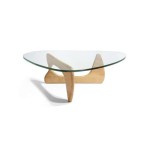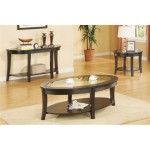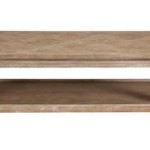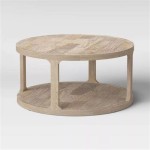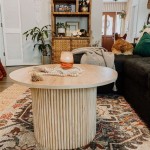Queen Anne Coffee Tables and End Tables: A Study in Elegance and Function
Queen Anne furniture, a style popular from the early 18th century through the mid-18th century, represents a significant shift from the heavier, more ornate Baroque furniture that preceded it. Characterized by its graceful curves, cabriole legs, and emphasis on comfort and functionality, Queen Anne design quickly became a symbol of refined taste and understated elegance. While often associated with larger pieces like highboys and dining chairs, the Queen Anne style also extends to smaller, equally significant pieces such as coffee tables and end tables.
These tables, designed to complement the larger furniture in a room, embody the core principles of the Queen Anne aesthetic. They are characterized by a harmonious blend of form and function, offering both visual appeal and practical utility. The enduring popularity of Queen Anne coffee tables and end tables lies in their ability to seamlessly integrate into a wide range of interior design styles, from traditional to transitional, adding a touch of sophistication and timeless charm.
Key Characteristics of Queen Anne Furniture
Understanding the defining features of Queen Anne furniture is essential for appreciating the unique qualities of Queen Anne coffee tables and end tables. Several key characteristics distinguish this style from others:
The Cabriole Leg: Perhaps the most recognizable feature of Queen Anne furniture is the cabriole leg. This S-shaped leg curves outward at the knee and inward at the ankle, terminating in a variety of foot styles, including the pad foot, club foot, and trifid foot. The cabriole leg provides both structural support and visual grace, contributing to the overall elegance of the piece. Unlike the straight, heavy legs of earlier styles, the cabriole leg introduces a sense of lightness and fluidity.
Curved Lines and Gentle Forms: The Queen Anne style emphasizes curved lines and gentle forms, creating a sense of harmony and visual appeal. This can be seen in the rounded corners of table tops, the smoothly sculpted aprons, and the overall flowing lines of the furniture. The absence of sharp angles and the emphasis on smooth transitions contribute to the refined and sophisticated aesthetic of Queen Anne furniture.
Understated Ornamentation: Compared to the more elaborate ornamentation of the Baroque period, Queen Anne furniture features relatively restrained decorative elements. Ornamentation is typically limited to subtle carvings, such as shell motifs, acanthus leaves, or delicate floral patterns. Veneering, particularly with walnut or cherry, is also common, adding visual interest and highlighting the natural beauty of the wood. The emphasis is on quality craftsmanship and the inherent beauty of the materials, rather than excessive ornamentation.
Use of Walnut and Other Fine Woods: Walnut was the preferred wood for Queen Anne furniture, prized for its rich color, fine grain, and durability. Cherry, maple, and mahogany were also used, often in combination with walnut. The choice of these fine woods reflects the appreciation for quality and craftsmanship that characterized the Queen Anne period. The natural beauty of the wood is often enhanced by a carefully applied finish, which highlights the grain and protects the surface.
Queen Anne Coffee Tables: Functionality and Style
Queen Anne coffee tables epitomize the style's commitment to functionality and elegance. Designed to provide a convenient surface for placing drinks, books, and other items, these tables combine practical utility with visual appeal. Their relatively small size makes them ideal for use in a variety of settings, from formal living rooms to more casual family rooms.
A typical Queen Anne coffee table features a rectangular or oval top, supported by four cabriole legs. The apron, the decorative band that runs along the underside of the table top, is often subtly curved or molded, adding visual interest. The finish is typically a warm, rich color that enhances the natural beauty of the wood. Some Queen Anne coffee tables may also feature a drawer or two, providing additional storage space.
The versatility of the Queen Anne coffee table makes it a popular choice for contemporary interiors. It can be paired with a variety of seating arrangements, from traditional sofas and armchairs to more modern sectional sofas. Its timeless design ensures that it will remain a stylish and functional addition to any room for years to come.
Furthermore, the Queen Anne coffee table is often a focal point in a conversation area. Its design encourages a sense of intimacy and connection, making it an ideal place to gather with friends and family. The table's surface provides a convenient space for serving refreshments, displaying decorative objects, or simply resting a book or magazine.
Queen Anne End Tables: Accenting the Room
Queen Anne end tables serve as valuable accents to sofas, chairs, and beds, providing a convenient surface for lamps, books, and other items. Like Queen Anne coffee tables, end tables feature cabriole legs, curved aprons, and fine wood construction. They are typically smaller than coffee tables, designed to fit comfortably beside seating arrangements without overwhelming the space.
Queen Anne end tables come in a variety of shapes and sizes, allowing them to be used in a range of contexts. Some end tables feature a single drawer, while others have an open shelf for storing books or magazines. The tops of Queen Anne end tables are often round, square, or rectangular, depending on the overall design and the intended use of the table.
The selection of a Queen Anne end table can greatly enhance the overall aesthetic of a room. Consider the table's size and shape in relation to the surrounding furniture. A taller, narrower end table might be ideal for placing beside a high-backed armchair, while a shorter, wider end table might be more appropriate for use beside a low-slung sofa. The finish of the end table should also complement the other furniture in the room, creating a cohesive and harmonious look.
In addition to their functional role, Queen Anne end tables can also serve as decorative elements. A carefully chosen end table can add a touch of elegance and sophistication to a room, enhancing its overall visual appeal. Consider placing a decorative lamp, a vase of flowers, or a framed photograph on the table to create a focal point and add personality to the space.
Many designers favor using a pair of matching Queen Anne end tables to flank a sofa or bed. This creates a sense of symmetry and balance, enhancing the overall visual harmony of the room. The matching end tables can provide a convenient surface for both reading lamps and personal items, creating a functional and stylish arrangement.
Materials and Construction Techniques
The quality and durability of Queen Anne coffee tables and end tables are largely dependent on the materials and construction techniques used. Genuine Queen Anne furniture was typically made from solid wood, such as walnut, cherry, or maple. These woods were carefully selected for their strength, beauty, and durability. Modern reproductions may also utilize these materials, but it is important to ensure that the wood is of high quality and properly seasoned.
Traditional construction techniques, such as dovetail joinery and mortise-and-tenon joints, were used to ensure the strength and stability of Queen Anne furniture. These traditional methods provide a strong and durable connection between the various components of the table, ensuring that it will withstand years of use. Modern reproductions may utilize similar techniques, or they may employ more modern methods, such as screws and dowels. However, it is important to ensure that the construction is solid and that the joints are properly fitted.
The finish of a Queen Anne coffee table or end table is also an important factor to consider. A well-applied finish will protect the wood from moisture, scratches, and other damage, while also enhancing its natural beauty. Traditional finishes, such as varnish or shellac, were often used to create a rich, warm luster. Modern finishes, such as lacquer or polyurethane, can also be used, but it is important to choose a finish that is appropriate for the wood and the overall style of the piece.
The hardware used on Queen Anne coffee tables and end tables can also contribute to their overall appeal. Brass pulls and knobs were commonly used on authentic Queen Anne furniture, adding a touch of elegance and sophistication. Reproductions may use similar hardware, or they may employ more modern styles. However, it is important to ensure that the hardware is of high quality and that it complements the overall design of the table.
When evaluating a Queen Anne coffee table or end table, it is important to carefully examine the materials, construction, finish, and hardware. By paying attention to these details, one can ensure that the table is of high quality and that it will provide years of enjoyment. Whether purchasing an antique Queen Anne piece or a modern reproduction, the selection process should be approached with careful consideration and a discerning eye.

Queen Anne Coffee Table Georges Furniture Lancaster County Pa

Queen Anne Coffee Table Georges Furniture Lancaster County Pa

Queen Anne Coffee Table Georges Furniture Lancaster County Pa

Queen Anne Coffee Table And End Tables Collection Distressed Style By 2n Sehpa Geri Dönüşüm

Qw Amish Queen Anne Coffee Table Quality Woods Furniture

Fitzroy Queen Anne Coffee Table Made Furniture

Queen Anne Coffee Table Akd Furniture

How To Identify Queen Anne Furniture Invaluable
Harden Brandywine Cherry Pair Queen Anne One Drawer Side Tables

Mahogany Queen Anne Coffee Table Island Furniture Co

